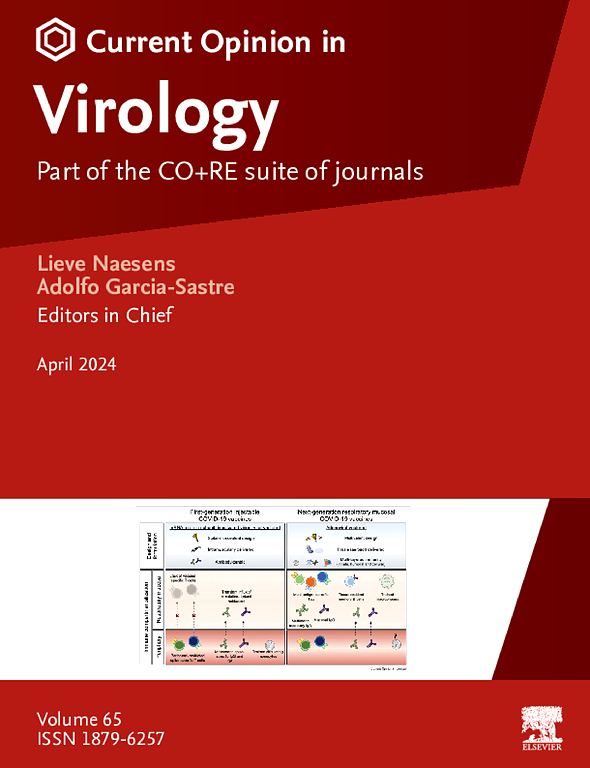病毒与大脑的联系:黄病毒和肠病毒神经感染的最新进展
IF 5.1
2区 医学
Q1 VIROLOGY
引用次数: 0
摘要
嗜神经病毒的全球流行率每年都在增加,但没有有效的治疗方法。病毒进入大脑涉及宿主和病毒因素的复杂相互作用,如紧密连接复合物、免疫调节因子和病毒蛋白多态性。在大脑中建立感染后,嗜神经病毒可以触发免疫细胞激活,强烈的炎症反应和突触破坏,导致急性和慢性神经病理,包括加速神经元老化和神经变性。大量的研究集中在临床相关嗜神经RNA病毒的神经毒力和神经发病机制的分子机制上,揭示了它们与宿主细胞和免疫反应相互作用的重要见解。然而,尽管取得了这些进展,但对这些病毒如何进入大脑的了解仍然存在差异。在这篇综述中,我们将讨论近2年来在揭示临床相关的嗜神经黄病毒和肠病毒在引起神经相关病理中的神经外显性方面取得的重大进展,以及研究领域和面临的挑战。本文章由计算机程序翻译,如有差异,请以英文原文为准。
Nexus of virus and brain: recent advances in flavivirus and enterovirus neuro-infection
The global prevalence of neurotropic viruses is increasing annually, with no effective treatments available. Viral entry into the brain involves a complex interplay of host and viral factors, such as tight junction complexes, immune regulators, and viral protein polymorphisms. After establishing an infection in the brain, neurotropic viruses can trigger immune cell activation, robust inflammatory responses, and synaptic disruption, contributing to both acute and chronic neuropathology, including accelerated neuronal ageing and neurodegeneration. A wealth of studies has focused on the molecular mechanisms underlying the neurovirulence and neuropathogenesis of clinically relevant neurotropic RNA viruses, revealing critical insights into their interactions with host cells and immune response. However, despite such advances, a disparity in knowledge on how these viruses enter the brain remains. In this review, significant progress within the last 2 years, as well as research niche and challenges in unravelling the neuropenetrance of clinically relevant neurotropic flaviviruses and enteroviruses in causing neuro-associated pathology will be discussed.
求助全文
通过发布文献求助,成功后即可免费获取论文全文。
去求助
来源期刊

Current opinion in virology
VIROLOGY-
CiteScore
11.80
自引率
5.10%
发文量
76
审稿时长
83 days
期刊介绍:
Current Opinion in Virology (COVIRO) is a systematic review journal that aims to provide specialists with a unique and educational platform to keep up to date with the expanding volume of information published in the field of virology. It publishes 6 issues per year covering the following 11 sections, each of which is reviewed once a year: Emerging viruses: interspecies transmission; Viral immunology; Viral pathogenesis; Preventive and therapeutic vaccines; Antiviral strategies; Virus structure and expression; Animal models for viral diseases; Engineering for viral resistance; Viruses and cancer; Virus vector interactions. There is also a section that changes every year to reflect hot topics in the field.
 求助内容:
求助内容: 应助结果提醒方式:
应助结果提醒方式:


